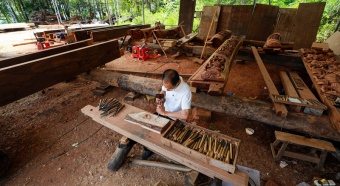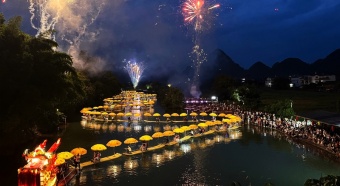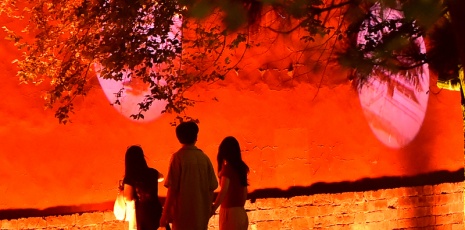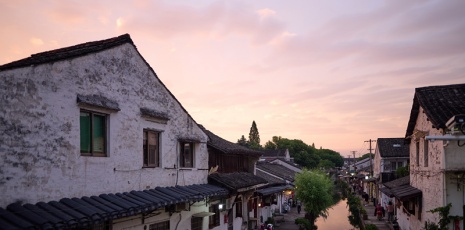During the recent summer vacation, my wife and I watched almost all the animated movies shown in the cinema with our daughter. In retrospect, watching a movie in the past was like celebrating a festival. How fast things changed!
Originally, our village has not been connected to electricity, and “real” electrical appliances. The “cultural education” then basically consisted of parents’ “contrast of past misery and present happiness” before bedtime and villagers’ talking of other households’ affairs. Anyone who had seen red movies like “Landmine Warfare”, “Tunnel Warfare”, “From Victory to Victory” and “Zhang Ga the Soldier Boy” was talking about these movies in the village for almost two months.
In case of happy events, what the children expected most was the open-air movies.
Watching open-air movies seemed quite magnificent and classy in children’s eyes then. For preparation, township workers had to bring battery bottles to the village, look for an open site, dig a hole to bury the pole, fix the film curtain on the two poles, and put the projector in a right position... totally costing over two hours. Villagers would voluntarily offer their help for preparation, while the children would have a good time playing hand shadow in front of the projector.
A few years later, it was discovered that the films projected were always the old ones, in which villagers slowly lost their interests. Yet the memory buried in our minds is still fresh.
I went to the county to attend middle school in the mid-1990s, during which I occasionally went to a relatives’ home for eating and watching TV for free. At that time, cable TVs were merely available for urban citizens, our rural TVs could receive signals of only six or seven TV stations. Hong Kong movie clips watched in relatives’ home became important topic among classmates, and learning the acrobatic fighting actions in the movies and memorizing the classic dialogues in Stephen Chow’s movies became trendy. Gradually, Hong Kong films have begun to overturn the basic understanding of film philosophy of our generation——we became aware that films could be humorous, and even unreasonable.
My first chance of watching a movie in the state-run cinema of the county was, of course, offered by the school. Undoubtedly, if it wasn’t for the school’s organization, until the movie theater was demolished, I would not have the opportunity to pay for the ticket to enter the cinema that could accommodate hundreds of people to watch a movie.
Afterwards, VCD or DVD became all the rage in our village. At the village fairs, there were more DVD vendors than clothes vendors. My impression was that a pirated movie VCD costed about 10 yuan. However, our classmates often exchanged their VCDs to see more movies, or just spent fifty cents to rent a disc in a video store.
The county cinema was later demolished, and the place now becomes a private andrological hospital. In the early years of this century, the scale and popularity of marketized modern cinemas were still not worth mentioning. In my impression, the real prosperity, or period of massive development, of the film market was in the last 12 or 13 years.
All of a moment, watching movies in a movie theater became a magnet for lovers. I remember that in 2008, I took my wife to a modern cinema for the first time to watch “Kung Fu Panda”; in 2009, we watched a 3D film in the cinema for the first time——the Hollywood blockbuster “Avatar”. At that moment, we really felt the visual enjoyment brought by film technology progress. Since then, watching movies in cinemas has become a part and parcel of our family cultural life.
Two years ago, two commercial complexes were built in our old town, accompanied by two modern theaters with 3D and IMAX. Spread of modern cinemas from first-and second-tier cities to remote small towns indicates that the cultural life of the Chinese people is becoming richer and richer.
Changes in cinemas over the years have mirrored progress of China’s reform and opening-up in the past 40 years. From film curtains to modern cinemas, it is enough to reveal China’s continuous upgrading of cultural industry and improvement of people’s living standards.









